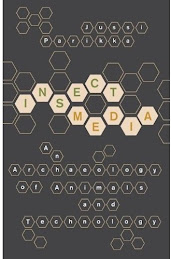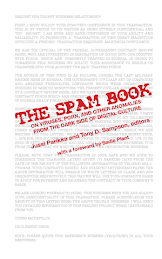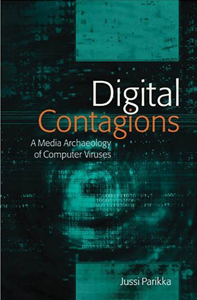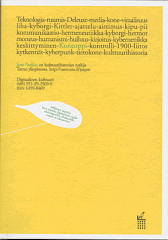This conversation between me and Tiziana Terranova took place in early November – actually just before the first mass demonstrations by students and academic staff in the UK – an event after which we have seen further resistance acts of various kinds, from more aggressive expressions of anger to such as the foundation of the
University for Strategic Optimism. Resistance does not just exist; it needs to be invented, always anew.
This interview was published in the Italian newspaper
Il Manifesto on 14 November 2010 (in Italian), and is now here available in English as well. This version is the original, and slightly longer as well. Of course, what we have seen since this interview was conducted was a development of certain themes; for example, the disagreement within Russell group universities seems to be escalating with students for example in Cambridge demanding that the university raises objections to the cuts; occupations of various universities are similar signs of calls for student-focus of a different sort than we get with the "tick-the-box" exercises of student happiness (the National Student Survey); the libdems are clearly having severe internal problems; the police use of dubious tactics against demonstrators are raising questions, and pointing towards a very scary response from the officials towards the resistance.
Tiziana Terranova:
In Italy, we have been facing substantial cuts to the public education sector for a few years now - cuts that have progressively undermined the value of public education, involving massive layoffs, a freeze on new posts, reduction of viable courses, more crowded classrooms, less hours of actual teaching and so on. These cuts have gone together with drastic reduction of resources for the cultural sector as well. Rather than being a local phenomenon, this public disinvestment in culture and education seems a core part of the economic and political restructuring following the financial crisis of 2008. In the UK, these cuts have taken a specific inflection: 100% cuts to the public funding of teaching in the arts, humanities and social sciences. How do you explain such a massive reduction especially in the wake of the much hyped investment in the cultural economy and creative industries? Jussi Parikka
It’s a shock, and a shock in the very fundamental sense that Naomi Klein introduced as a doctrine of “disaster capitalism”. The recent events in the higher education sector, and naturally across other public sectors too are in themselves so terrifying that there is a danger that the surprise has worked. As you outline, and what applies to many other countries as well –the 2008 crisis did not take us back to a Keynesian culture of public investment, but to a further privatization of fundamental public goods – the expectation has been all along that the public sector is being run down. In terms of the university sector in the UK such cuts had been pre-empted for a long time; already before the elections that brought the Tories and Liberal democrats into the government, the sector was preparing for big cuts, or what seemed big cuts then: cuts of millions of pounds, and several percent from the higher education budget. The Browne commission to investigate models for the future of Higher Education in the UK was set by Labour. Labour had already during Lord Mandelsson’s rule shifted Universities as part of the Department for Business, Innovation and Skills, and in 2009 already he talked of hike in student fees, further consumer control of courses, straightforward employability as the key criteria for any public funding of a university course and so forth. So what happened when the new government came in was that they could easily take over the same discourse, same way of thinking. The talk turned to fears of 20 % cuts, then to feared 40% cuts, at which point people and critics started to say that it is just part of a game where they scare us off with such drastic cuts, and when “only” for example 20% of Higher education budgets are reduced, we breath out a relief. Well, the opposite happened: suddenly, only the privileged few were seen eligible for public funding, namely carefully selected STEM topics, i.e. science, technology, engineering and maths, and more or less all of the humanities, arts and social sciences left out with a sudden, complete privatization of their degree courses – and with feared reductions in research monies coming as well. Suddenly, the public university system was gone.
So indeed, it’s not only a pragmatic shift in terms of how the whole sector is being organized, but how the so-called cultural economy and creative industries are suddenly as if without a role as part of high-tech Britain. Cool, creative, hip, post-fordist Britannia was New Labour’s and Tony Blair’s brain child of the 1990s, that was carried over till now; that provided at least a minor shelter in some minds and institutions for the cultural studies and arts sectors, and courses, and some kind of justification for their existence. Meanings, representations, artistic practices could be integrated to that model of “creative capitalism” with a friendly artistic face. After all, culture – lifestyles, habits, arts, digital creation from music to publishing industries – was supposed to be leading the future of Britannia.
Yet, during the past couple of years, the creative industries discourse has been bit by bit replaced by that of “digital economy” as the new key words that is being circulated both in academic funding bodies and their calls, legislation as well as public discourse. Seemingly a slight change from creative industries to a more ICT oriented version, it actually is a further consolidation of the perception that digital culture equals the science and engineering solutions that contribute towards platforms and communication in the narrow signal processing sense; the Digital Economy Bill, and the following Act, and related debates focused on such projects as the Digital Infrastructure for Britain that is to guarantee high speed broadband; while it also contributed towards strict copyright infringement penalties which have been highly debated, the push has been towards technology – and technology as in infrastructure, engineering and science solutions that are able to provide more viable income streams than the always so vague service industry model of creativity. With the drastic cuts, the message in terms of how public goods, but also economic value are being defined is clear: despite statistics of the huge input by arts and humanities sector to even economic wealth creation, they are suddenly the superfluous, redundant sidekicks of the digital economy.
TT
Your analysis raises many interesting points. The first one concerns the continuity with Labour. The ground for the Browne report was prepared by the labour government and the cuts would have followed even if labour had actually continued to rule. It took fifteen years of neo-labor policies in higher education to ingrain the notion that public investment in higher education is justified because of the economic returns that it provides. This shift was made palatable to the arts, human and social sciences by acknowledging their importance as productive economic forces– in terms of new careers opening in the cultural and creative economy and in terms of the economic impact generated by artistic, cultural and social research. Hence the arts, humanities and social science were perceived as actually being worthy of public investment. Hence the shock in finding out that it took a simple change in government to cut off all public investment and be thrown in the jungle scenario of full privatization! The cuts are so massive, entire teaching budgets are being wiped out and as you said there is widespread incredulity about the sheer size the UK government’s gamble. The so-called elite institution will be able to raise tuition fees and focus on the very rich segment of the international students’ markets, but for most universities it will be dire. It will be an enormous shake out – opening the uk higher education sector to the takeover of multinational corporations of education, such as online degree factories and so on. There will be re-engineerings, layoffs, fusions, mergers, increasing use of low-wage, precarious labor. Before moving on to the subject of the transformation of the ways in which this was possible by the turn to the digital economy, I wanted to ask you about the current and possible future reactions to this dramatic scenario – both within and outside the universities. JP
The reception of and reaction to the news has been varied, and this is emblematic of the situation. The so-called elite institutions –- in itself an interesting term and status, as it combines the eliteness of the “Old Britain” of class society, of private schools and Oxbridge/Russell Group with the new status of neoliberal, well-funded and global brands of those universities – have been greeting these news happily; for such institutions, it does not seem to be an issue in any ethical sense to triple their fees, it seems, whereas for smaller institutions such as ex-polytechnics it causes a potentially major shift in how they think their functioning. For a number of years, these smaller universities were strongly going to research, and moving from teaching only institutions to supporting new waves of research in media, culture and the arts in such ways not always found in the more establish, and also slowly changing and less experimental old institutions. Now many institutions might be forced to become mostly teaching ones again. And of course, we should not romanticize the younger institutions either; we saw what happened in Middlesex with the threatened closing down of their Philosophy Centre, that was however “sold” to Kingston University --- and Middlesex replaced it with more teaching places in STEM-subjects.
Naturally the cuts are drastic to almost every institution – Russell group or not – but for Oxbridge and others the Browne review was good news in terms of the possibility to hike up fees, what however has been condemned by for example of course student bodies. It is indeed interesting to see how this develops as a rift between Russell group and others, and inside the elite institutions between students, staff and the senior management. The National Union of Students has been constantly insisting that we need to look at alternative forms for supporting the financial basis of the universities, backing up for example the graduate tax model instead of fees – and hiking fees. We see new rifts emerging, which is good for the dismantle and conquer-politics of the government and the Conservatives-Lib Dem alliance: so called elites are more or less welcoming some of the changes and playing along as they can always rely both on their international prestige as well as the fact a lot of their students come from a more wealthy background anyway. Despite the fact that the students would not be paying back any debts before they start earning £21,000 a year after graduation, the prospective students from lower earning families feel this as a scary horizon; the promised social rise that universities might be promising is not so much a rise, but a promise of a middle class debt. The situation has as much to do with a mental ecology of middle classification, and debt, as it has with fiscal policies and economic cuts. Suddenly, just like from a J.G.Ballard novel – I am thinking of Millennium People – the middle classes – or those wanting to become middle classes with a nice standard of living, jobs, house, a future – are faced with a situation that all they were promised with is actually clouded by the likelihood of debt, insecure futures, risk taking, and a whole new atmosphere where nothing seems fun anymore. Sounds banal, but there is a political edge to this mental ecology of a sense of time. It has to do with a sense – or lack of – futurity. The elections last spring played around with this sense of futurity with Liberal Democrats riding the wave of promises of getting rid of student fees, and again a mental ecology of a very different sense; now with the complete overturning of their promises, one can sense a lot of anger, frustration, and disappointment in politics of futurity.
Hence, in terms of reactions – the big demonstration is being organized for November 10 in London; there are local struggles that are getting some visibility, like at Goldsmiths college; at the same time some occupations of Vodafone shops as resistance to them being letting off a £6 billion tax debt; in Ireland students occupied the Department of Finance in Dublin for a short while --- there are some things going on, but the further consolidation of that feeling, that affective state of discontent which is always in danger of turning into depression, into something that could provide a sustained political resistance that is actually registered on the governmental level is of importance. Having said that, I think thinking this in terms of politics of affect, the pre-cognitive, is important as well – in a manner that Nigel Thrift has spoken about political activism, and the need to understand the strong, emotional, and affective ties and investments on very small levels of everyday action; this level needs understanding, and support, and it might already start there. One of the things I still hope can provide something is a wider affective association between students and the teaching and administrative staff, even if for example Russell group wants to distance themselves from the rest of the universities. The danger is that most of media publicity voices primarily those views, even if there are about 100 other universities in addition to the handful of “elite” ones.
In terms of university reactions, as you say, it will cause new directions; most universities are forced to come up with alternative business models and income streams which means potentially shortening some courses to 2 years, increased partnership with the private sector – which in itself is tricky as the private sector does not really have any extra money in most industries, such as the creative industries, and the private sector too is facing unemployment, cuts in spending, etc. -, increased reliance on international students where I see dangers of forms of neo-colonialism where British universities sell the experience and prestige of the old Europe to the ex-colonialised and Asian countries with a high price, effective privatization of many sectors, where arts and humanities are less recognized as a general good for any critical, democratic society but only as an investment for a bit of luxury – being able to study for a couple of years such things as critical theory, feminist theory, postcolonial studies…
To be fair, some universities, even smaller and younger ones, might be able to use their “brand” in a way that strengthens their status in the global arena, and sell their status as leading arts, philosophy or cultural and media studies centres, but such models are indeed only local solutions, and do not offer a viable future for the dozens of other universities which lack that reputation despite the high quality research and commitment. Here we have to be cognizant of the various measures through which contemporary universities are already corporations with brands that are protected through meticulous measures continuously – such things as where you are placed (a pittoresque Cambridge, or buzzing London are sure to be attractions for the nice 3 year academic theme park ride to which you can send your kids to Europe, instead of the attractiveness of an old industrial town in northern England despite how great it might be intellectually), or indeed the academic brand – but only if it is marketed attractively…
TT
As you mentioned before, the whole notion of the creative cultural economy which was a leit motif of economic policy for the last fifteen years has been dispensed with quickly. The turn from the creative economy to the digital economy means that only science and engineering are now seen as providing economic value and hence worthy of public support. Everywhere the public funding of culture and critical thinking is under attack. As a new media researcher, how do you see this change? What do you think about Jaron Lanier’s position according to whom the Internet and the web 2.0 in particular are responsible for the devaluation of cognitive labor? Is there any relation between this dramatic shift in policy and the actual social and economic changes affecting the media and new media industry (such as the Web 2.0 hype)? JP
The tricky bit about the cuts and the new shift in terms of emphasis from “soft skills” of information economy and post-Fordist culture to engineering, mathematics, and sciences is that there is no clear economic justification – or let’s say that it’s not that the creative industries had not been producing value. A quick look at statistics from the National Archives statistics concerning Creative Industries says that the sector grew approximately 5 % a year between 1997 and 2007, which is more than the average growth of the whole economy (around 3 %) – and of that, sectors such as software, computer games and electronic publishing grew even 9 %! And to continue on statistics, a recent report on the UK Higher Education institutions gave similar points; they produce huge amounts of economic value and effects throughout the society, signalling revenue of almost £17 billion in 2003-2004, which was bigger than what for example the pharmaceutical industry produced in this country! And the knock on effects: for every million pounds produced inside the sector the report said the sector produced an addition £1.52 million in related sectors, and in terms of jobs, a very similar story that 100 full time jobs in the university sector has been supporting the existence of another 100 jobs.
So it’s clearly something else than clear-cut economic rationale what is at play here, and would be tempting to read this as a major shift in terms of how labour is being seen and reorganized. This is what we used to call ideology, and at least part of a very meticulous, very subtle channelling of desires, and the aforementioned relation to temporality, as well as to production, creativity, participation. It’s a further emphasis in terms of how temporarity is being imposed as the normalized status of the “creative worker”, which indeed includes the university staff, and to which we training our students from the first day on; endure change, live as flexible, be prone to shift changes in what is being expected of you, and do not ask for a stable horizon that we used to call a future. The modes of labour that supported so much of creative and internet economics were indeed based on the psychic investment – enthusiasm, volunteering, chipping in – and remarkably that has been for a long time the basis of university work. Yet, what only yesterday it seems, in the 1990s, was celebrated by the likes of Pekka Himanen as the new work ethic of hacker spirit has proved to be a complete failure in terms of providing the tools for an expropriation of value from enthusiasm, openness and community, but the incapability of developing a creative economy from the point of view of labour. This is an interesting development, which forces us to understand the complexities in digital culture patterns of labour; what cultural pessimists see as the dangerous development that such participatory cultures brought about – perhaps indeed Lanier, but also a bunch of other writers – is part of a wider web of rise of collaborative cultures, which have been hailed as the new era of communities, of active prosumers, and all that – things we surely would not think of bad after the years of big bad broadcasting capitalism that we hated in a Adornoesque spirit, right? There is no going back to the earlier elitism, despite what some critics hint about the rise of the banal amateur culture – it’s more likely that the old elitism is finding new ways to sustain itself in neoliberal settings, as we are seeing in Britain with the old class based Russell group elitism turning into a managerially supportable, neoliberal form of global education trade that is based on global patterns that pick up the colonialist links of earlier times but now in the form of neo-colonialism of educational offering.
Yet, in terms of labour in social media and creative economies, what such patterns of participation and new eagerness, enthusiasm, volunteering, produced were not really, not yet at least, viable income models for cultural workers, and it has to an extent been a new way of capitalist capture in terms of the desire for participation. Capitalism has always been based on capturing certain kinds of social relations. A lot of cultural critics emphasize the bit about the affective labour (to which university work fits in perfectly): that it is a good way to tie in investment of time and energy to maintenance of the new “nice, participatory, cultural capitalism”. I would not go on saying and blaming the Internet, or be a pessimist about the new technologies as if they would be behind the demise of value of cultural labour and arts, but it’s actually a matter of a such political economy of labour in the digital age, that would be able to sustain the new patterns of how we engage, produce.
So what the digital economy emphasis can actually strengthen is the current situation; creative industries are perhaps recognized as symbolically important but expected to run on the privatized investment – and talking also of psychic investment of desire, eagerness – than subsided by for example public spending on the arts, culture and media industries. The capital heavy fields of tech and science are still recognized as needing that support, because of their overheads – the fact that it’s expensive often, both to educate with all that lab equipment, as well as to maintain. The maintenance of people, of that bit of the production process, is left to the assumption that it sorts itself out. People are really expensive for any corporation, but if you find a model where they do the same work for half the price, you are on to something. Just make sure you get the IP, and that the copyright and IP legislation is organized so that it maximizes the value to be extracted. You need to tie in the people and their skills with other means than money, and affective enthusiasm is one (even if at an increasing pace the psychological and even physical well being of higher education staff is at risk). Also, what this shift in terms of investment could mean is a shift of Britain from one of the inspiring hubs of critical thought and creation, from cultural theory and arts to pop culture, to a new corporatized science-tech hubs. High tech, but a bit grey.



















